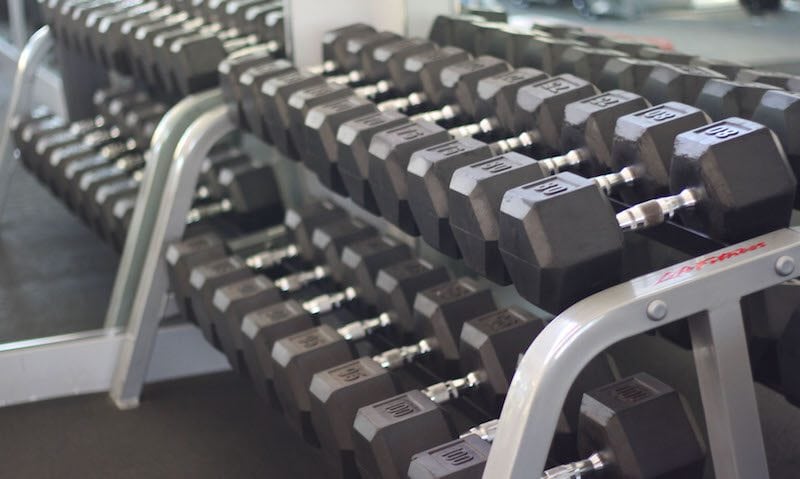No products in the cart.
Bodybuilding vs Strength Training

Many people when they first walk into a gym have the goal of wanting to be both ‘big and strong’.
They think both training methods are interchangeable. After reading how weight training builds muscle size and strength, many will attempt to follow a training plan that caters for both.
Only when they move out of the beginner’s stage of training do they realise that to keep progressing in either discipline you need to train specifically for either ‘strength or size’.
Granted that many training programs do have both disciplines thrown into the mix and yes there is a cross over between the both of them.
However, to increase your muscle mass or strength then you will need to understand the difference between both training methods. This will put onto the right path in terms of your training goals.
Let’s take a closer look at both bodybuilding and strength training:
The Fundamental Differences Between Size And Strength
In a nutshell, the big difference between building size and strength is the actual training volume.
Training volume is the total number of sets and reps that are pumped out during each workout. Therefore, the higher number of sets and exercises concentrated on a muscle group or whole body the greater your training volume.
Theoretically increasing muscle size requires a higher training volume than building strength. And this can impact on how your body reacts and adapts to the stresses of training.
Hypertrophy Training
In simple terms for your muscle’s to grow effectively, they need the right amount of training volume and load. You are still going to use a heavy weight but the higher training volume will dictate that the weight will be lighter than used for strength training.
By mixing the right amount of training volumes with the correct amount of weight being used equates to an increase in muscle size.
This strategy is not rocket science and this is termed ‘structural hypertrophy’ as it allows you to concentrate on the muscles themselves. Plus it leans towards performing fewer amounts of sets per exercise.
In essence, by slowing down the movement when combined with the sheer volume of reps will increase the time that your muscle is stressed.
This is the vital stimulus needed for muscle growth. Undoubtedly you will have strength gains along the way but boosts in muscular growth will overtake these strength gains when training in this manner.
Practical Application
When executing the big lifts such as barbell squats or deadlifts work at an intensity of between 70-85% 1RM with a higher rep range of 12-15 in total will induce hypertrophy.
A common strategy used is 3 sets of 5 main lifts with a heavier load and then progress to 4 sets of 6 exercises with a lighter workload.
The rest interval between sets is also another consideration and research has shown that to maximise your muscle gains it should be between 90-120 seconds.
This should give your muscle ample time to recover properly whilst keeping the metabolic/neural stress at its ultimate peak for muscle growth.
Low Reps And Heavy Weights
As mentioned previously there is a crossover between hypertrophy and strength and here it is!
The ‘low rep zone’ is defined as 1RM for 5 reps in one set and they are used to engage your high threshold motor units in your muscle.
Fundamentally this training strategy makes your nervous system a lot more efficient and switching from a higher rep range shocks your body into building muscle mass.
Your muscle will adapt very quickly to the stimulus of training and by using heavier weight is a catalyst for recruiting more muscle fibres and motor units.
Ultimately this does keep your muscle from adapting to the stresses of your work out and coerces them to grow more effectively.
Why not mix up your current regime and add a set of low reps and heavy weights in the equation?
Strength Training
To build absolute strength the communication of stress alters in a few ways. The main difference is the total training volume. Ultimately you will be lifting heavier weights with fewer repetitions per set.
In terms of the structure of a strength program, the main lifts should be followed by assisted lifts.
The main lifts fall into a percentage range of 80-90% of your 1RM for 2-4 reps per set for 3-5 sets. The total number of main lifts per work out is between 10-20 lifts.
However when the weight rises above the 90% 1RM mark, then the lifts are cut down even further to between 8-10 for 1-2 sets.
Absolute training should be performed within the 15-25 total rep range, with a weight between 70-80% 1RM. There is a reduction in the total number of exercises ( from 3-5 for the main lifts to 2-4 assisted lifts).
This reduction in the total number of exercises allows for proper recovery and prevents overtraining because the overall stress of the workout has been managed effectively.
The main objective of the assisted lifts is to identify any weaknesses in the main lifts. This will have the benefit of boosting your overall strength because you are lifting heavier in the main lifts.
In Conclusion
While the training is slightly different whether you are training for strength or muscle mass, there are certain things you need to do that will benefit both options.
For example, you will need to ensure you are giving 100% each training session. You should also ensure you are getting adequate rest between workouts. And that you are eating appropriately for your goals.
The following article on bulking will ensure you are eating the right kinds of food to experience those gains. Whether they are muscle gains, strength gains, or a bit of both.
Please leave any questions below using the comment form provided.
Save

Show muscles are nice, but I would rather real world strength personally.